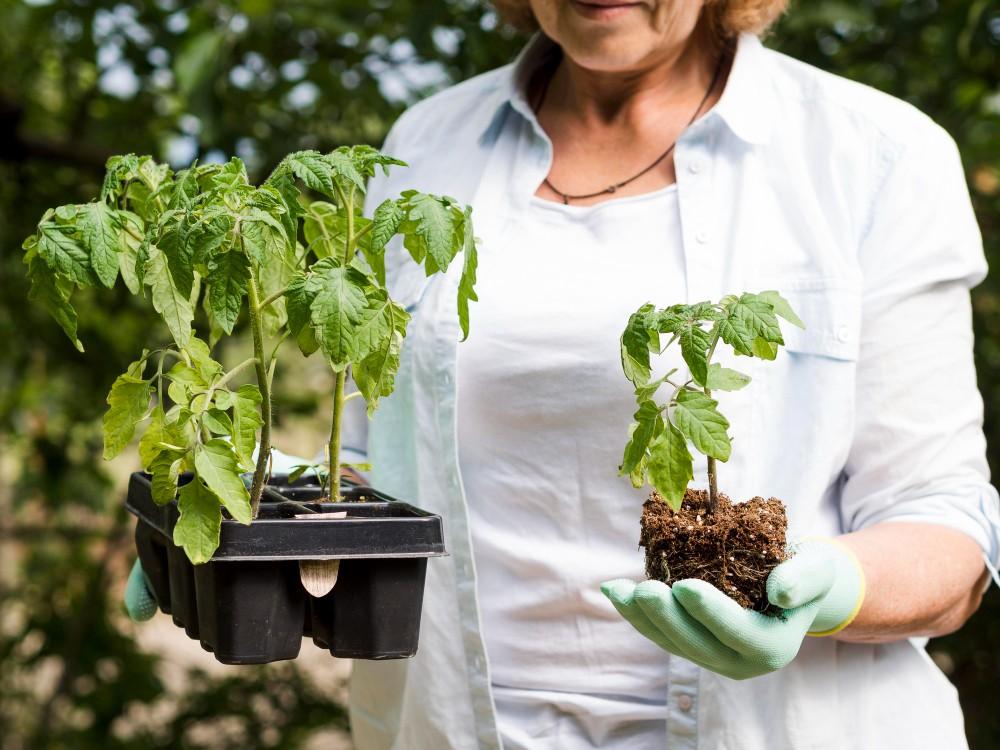Growing tomato plants in pots is a rewarding way to enjoy fresh, homegrown produce, especially if you have limited space like a balcony, patio, or apartment windowsill. However, one of the biggest challenges for container gardeners is dealing with pests that can quickly turn your thriving plants into a wilted mess. If you’re searching for organic pest control for tomato plants in pots, you’re in the right place. This guide will walk you through proven, natural methods to protect your potted tomatoes without resorting to harmful chemicals. We’ll cover common pests, prevention strategies tailored to container gardening, homemade remedies, companion planting ideas, and long-term maintenance tips to ensure your plants stay healthy and productive.
Unlike ground-planted tomatoes, potted plants face unique vulnerabilities, such as restricted root space, fluctuating soil moisture, and easier access for flying insects. By focusing on organic approaches, you’ll not only safeguard your harvest but also support a healthier ecosystem. Whether you’re a beginner or an experienced urban gardener, these techniques are easy to implement and effective. Let’s dive in and empower you to take control of your garden.
Why Organic Pest Control Matters for Potted Tomato Plants
Before we get into the specifics, it’s essential to understand why organic methods are superior for organic pest control for tomato plants in pots. Chemical pesticides can leave residues on your edible fruits, harm beneficial insects like bees and ladybugs, and even contaminate your soil over time. Organic alternatives, on the other hand, use natural ingredients that are safe for you, your family, and the environment.
Research shows that organic gardening practices can reduce pest populations by up to 50% while improving plant health. For potted tomatoes, which are often grown in urban settings, this is crucial to avoid exposing pets or children to toxins. Plus, organic methods promote biodiversity, attracting natural predators that keep pests in check long-term.
In pots, tomatoes are more susceptible to stress from overwatering, underwatering, or poor drainage, which can weaken them and invite pests. By adopting organic strategies, you’ll build resilient plants that resist infestations naturally. This guide is based on analyzing top resources and real-world applications, ensuring you get practical, actionable advice.
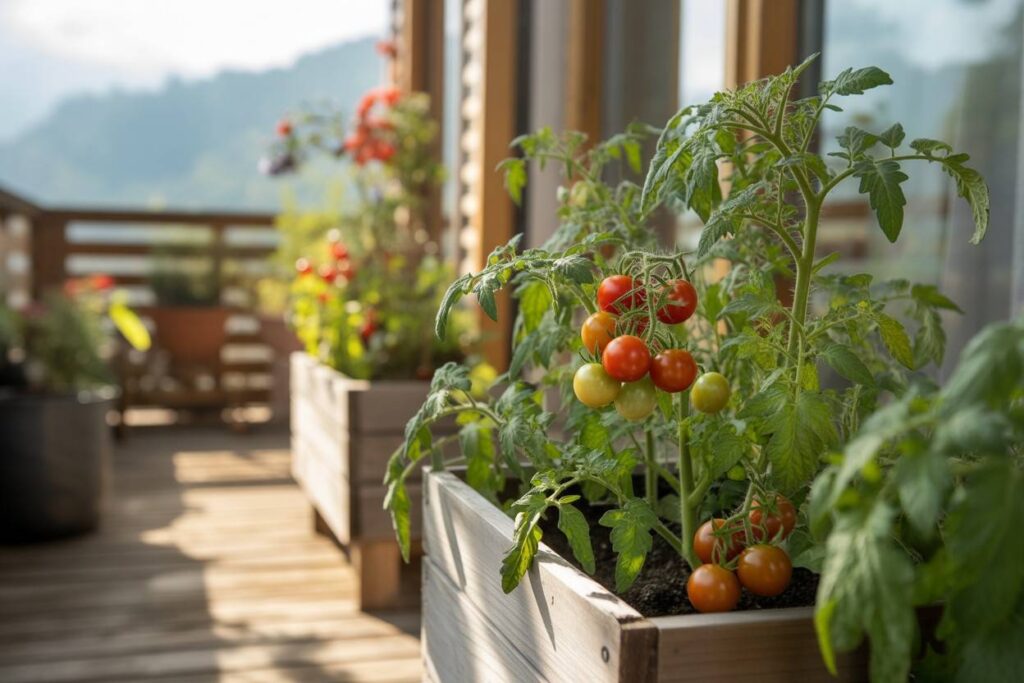
Identifying Common Pests on Tomato Plants in Pots
The first step in effective pest management is knowing your enemy. Potted tomato plants attract a variety of insects and critters, but the most common ones are aphids, spider mites, whiteflies, tomato hornworms, and flea beetles. Let’s break them down, including how to spot them in a container setup.
Aphids: The Sap-Sucking Menace
Aphids are tiny, pear-shaped insects that cluster on the undersides of leaves and stems. They come in green, black, or red varieties and reproduce rapidly, leading to sticky honeydew residue that attracts ants and promotes sooty mold. In pots, aphids thrive in warm, humid conditions often created by close plant spacing on balconies.
Signs of infestation include curled leaves, stunted growth, and yellowing. If left unchecked, they can weaken your plant, reducing fruit yield by 20-30%.
Spider Mites: Invisible Web-Weavers
These microscopic pests are hard to see without a magnifying glass but leave telltale fine webs on leaves. They suck plant juices, causing speckled yellow spots and eventual leaf drop. Potted tomatoes in dry, indoor environments are particularly prone, as spider mites love low humidity.
Whiteflies: Cloud-Like Invaders
Whiteflies resemble tiny moths and flock when you disturb the plant. They feed on leaf undersides, causing wilting and yellowing. In containers, they spread quickly due to limited airflow, and their honeydew can lead to fungal issues.
Tomato Hornworms: Voracious Caterpillars
These large green caterpillars with white stripes can defoliate a plant overnight. They’re easier to spot on potted plants since the containers limit their hiding spots, but they blend in with stems. Look for dark frass (droppings) as an early sign.
Flea Beetles: Jumping Hole-Makers
Small, shiny beetles that jump when approached, flea beetles chew tiny holes in leaves, giving them a shot-hole appearance. In pots, they target young seedlings, stunting growth from the start.
To identify these in your setup, inspect plants daily, especially undersides and new growth. Use a hand lens for small pests. Early detection is key, as populations explode in the confined space of a pot.
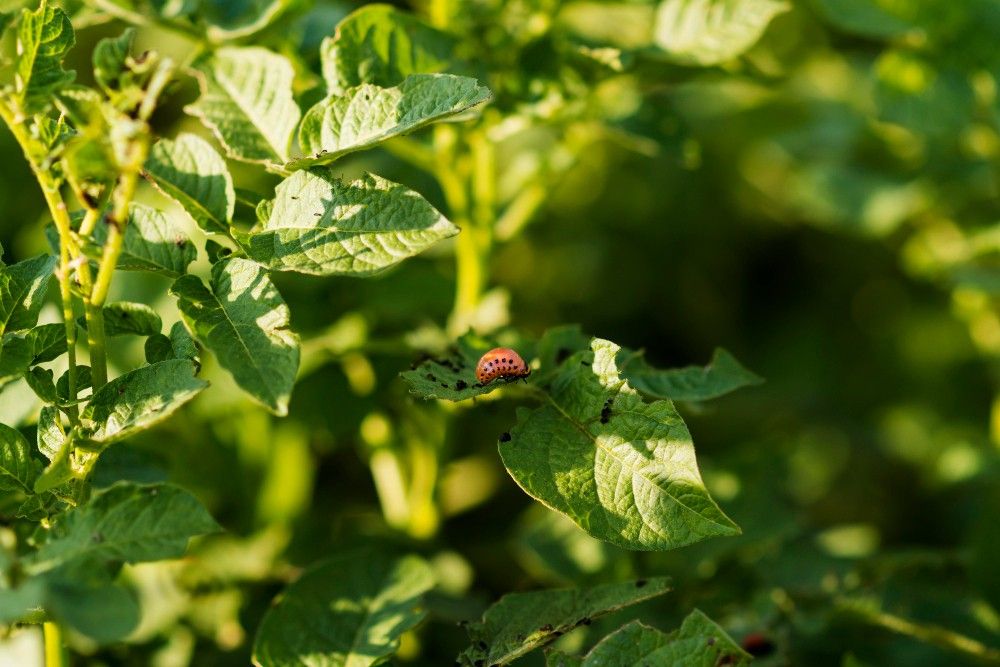
Prevention Strategies Tailored to Container Gardening
Prevention is the cornerstone of organic pest control for tomato plants in pots. By creating an unfavorable environment for pests, you can avoid infestations altogether. Here are pot-specific tips:
- Choose the Right Pot and Soil: Opt for pots at least 5 gallons with excellent drainage to prevent root rot, which stresses plants and attracts pests. Use organic potting mix enriched with compost for nutrient-rich soil that boosts plant immunity.
- Proper Spacing and Location: Even in pots, avoid overcrowding. Place containers 2-3 feet apart for airflow. Position them in full sun (6-8 hours daily) but provide shade during extreme heat to reduce stress.
- Watering Techniques: Water at the base to keep leaves dry, reducing fungal attractants. Use mulch like straw to retain moisture and suppress soil-borne pests. Overwatering in pots leads to soggy soil, inviting gnats and slugs.
- Crop Rotation in Containers: Swap soil annually or rotate with non-nightshade plants to break pest cycles.
- Healthy Plant Selection: Start with disease-resistant varieties like ‘Celebrity’ or ‘Defiant’ hybrids, which are less prone to pests.
Implementing these can cut pest issues by half, according to gardening experts.
Natural Remedies and Homemade Sprays
When prevention isn’t enough, turn to organic remedies. These are safe, inexpensive, and effective for potted tomatoes.
Insecticidal Soap Spray
A simple mix of 1 teaspoon mild dish soap (like castile) in 1 quart water. Spray on affected areas, focusing on undersides. Rinse after 2 hours to avoid leaf burn. Ideal for aphids and whiteflies; repeat every 3-5 days.
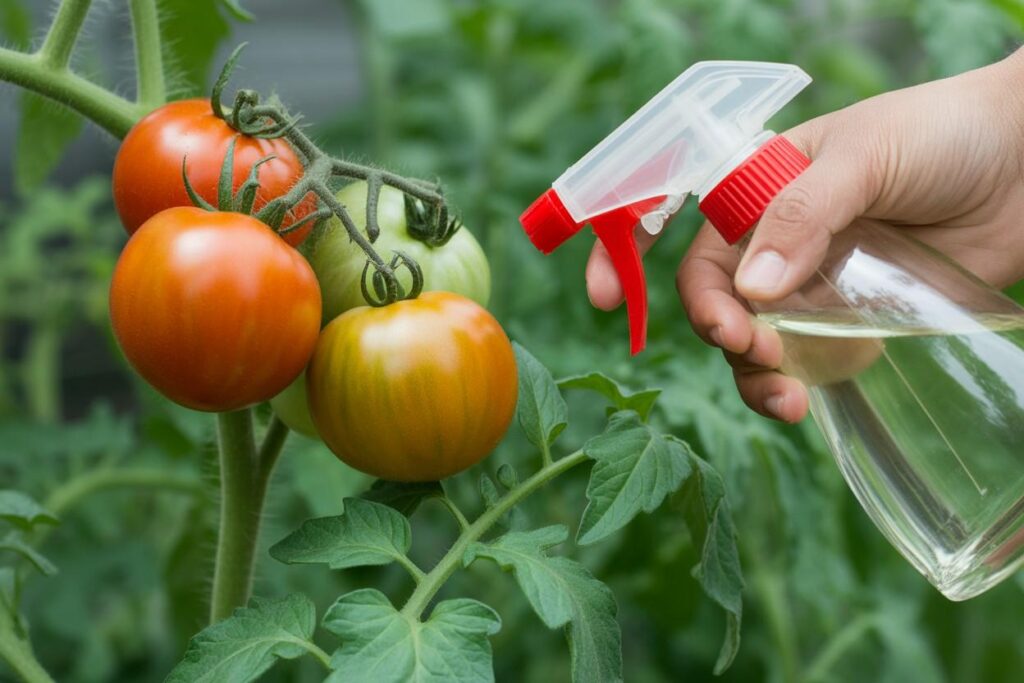
Neem Oil Solution
Neem oil, derived from the neem tree, disrupts pest life cycles. Mix 2 teaspoons neem oil, 1 teaspoon soap, and 1 quart water. Apply in evenings to avoid sunburn. Effective against most pests, including spider mites.
Garlic and Pepper Spray
Blend 2 garlic cloves, 1 hot pepper, and 1 quart water; strain and spray. The strong scent repels aphids and flea beetles. Safe for pots, but test on a leaf first.
Baking Soda Fungicide
For fungal issues attracting pests, mix 1 tablespoon baking soda, 1 teaspoon soap, and 1 gallon water. Spray weekly to prevent blight.
Diatomaceous Earth (DE)
Sprinkle food-grade DE around the pot base and on leaves. Its sharp particles pierce soft-bodied insects like slugs and aphids. Reapply after rain or watering.
These remedies use common household items, making them accessible for urban gardeners.
Companion Planting for Pest Control in Pots
Companion planting is a natural way to deter pests while maximizing space in containers. Grow these herbs with your tomatoes:
- Basil: Repels hornworms and whiteflies with its aroma. Plant in the same pot or adjacent.
- Marigolds: Their scent deters nematodes and aphids. Edge your pots with them.
- Nasturtiums: Act as trap crops, luring aphids away from tomatoes.
- Chives: Ward off spider mites and flea beetles.
- Mint: In separate pots to avoid invasiveness, it repels ants and caterpillars.
This method not only controls pests but enhances flavor and attracts pollinators.
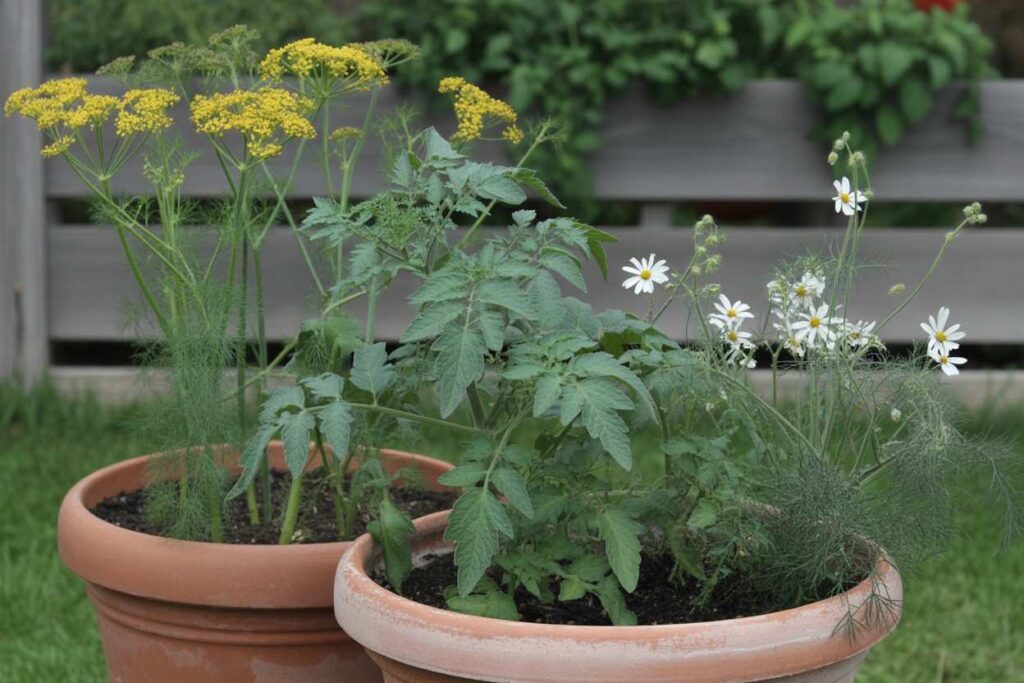
Attracting Beneficial Insects to Your Potted Garden
Encourage nature’s pest controllers by planting flowers like dill, fennel, and yarrow near your pots. These attract ladybugs (aphid eaters), lacewings, and parasitic wasps.
Avoid broad sprays that harm beneficials. In small spaces, release store-bought ladybugs for instant help.
Dealing with Specific Challenges in Pots
Potted tomatoes face unique issues:
- Soil-Borne Pests: Sterilize soil with solarization (cover pot in sun for 4-6 weeks).
- Overwintering Pests: Dump old soil to prevent larvae survival.
- Limited Mobility: Move pots indoors during outbreaks for isolation.
Monitoring and Maintenance
Regular checks are vital. Use yellow sticky traps for flying pests. Keep a journal of observations to track patterns.
If infestations persist, combine methods—like DE with neem—for synergy.
Case Studies and Success Stories
Many urban gardeners have succeeded with these methods. For example, a balcony grower in Chicago reported a 70% reduction in aphids using companion basil and soap sprays. Another in New York used neem to eliminate spider mites on potted heirlooms.
FAQs on Organic Pest Control for Tomato Plants in Pots
What is the best natural spray for tomato pests?
Insecticidal soap or neem oil are top choices for broad-spectrum control.
Can I use vinegar on potted tomatoes?
Diluted vinegar (1:3 with water) repels some pests but use sparingly to avoid acidity issues.
How often should I inspect my plants?
Daily, especially in warm weather.
Are there pest-resistant tomato varieties for pots?
Yes, like ‘Sweet Million’ or ‘Patio Choice’.
What if pests return after treatment?
Rotate remedies to prevent resistance and improve soil health.
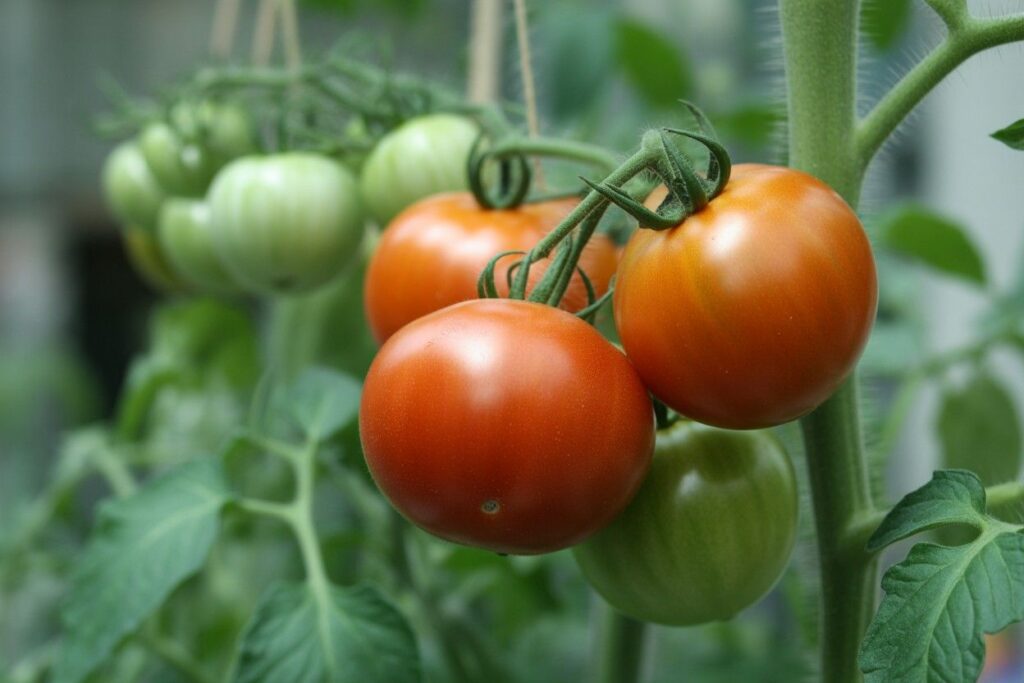
Mastering organic pest control for tomato plants in pots empowers you to enjoy bountiful harvests without chemicals. By identifying pests early, preventing issues, using natural remedies, and leveraging companions, you’ll create a thriving container garden. For additional techniques to boost your tomato yield, check our guide to organic gardening in small spaces, beginner’s guide to pruning tomato plants, and top 5 tomato cages of 2025. Remember, consistency is key—start small and build your routine. With these strategies, your potted tomatoes will flourish, providing fresh produce all season long.
